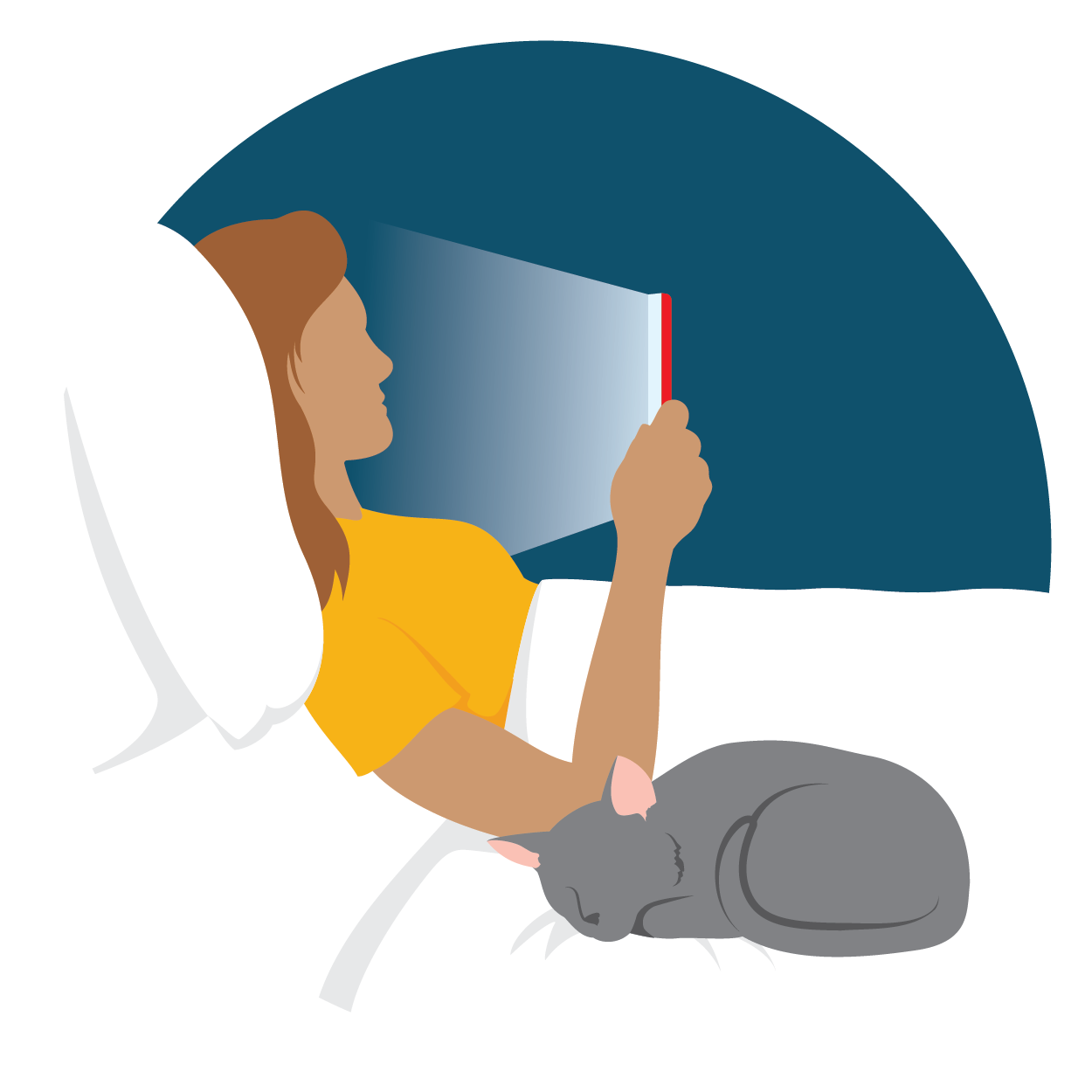
Graham Dugoni was sick of seeing smartphones everywhere when he lived in San Francisco in 2014. So he decided to create device-free spaces for people like him: artists, educators, and anyone else who craved a digital break.
The result is Yondr, a physical way to disconnect at concerts, schools, courtrooms, and private events. If a touring musician decides to use it, for instance, ticket holders are notified ahead of time that when they arrive at the venue, they’ll drop their phone into a pouch that locks when it’s closed. Patrons keep that pouch with them, but can only access their phone if they pop into specially designated sections away from the crowd. When they leave, the pouches are unlocked.
“A lot of what we hear is that the show is just better,” Dugoni says. Some people report that, after initially being anxious to lose access to their phone—an honorary limb—the experience ultimately proved liberating. “People walk out saying it’s incredible not to see a single smartphone out. There’s more energy, and it accentuates everything.”
YONDR’s existence shines light on a problem—that people have practically fused to their phones—and the need for solutions.
Research links smartphone overuse to a wide array of physical and mental-health issues, including fatigue and heightened depression and anxiety. Our phones suck away our attention, tempt us to drive and walk dangerously, and expose us to online callousness and bullying, says Adam Alter, a professor of marketing at NYU Stern School of Business and author of Irresistible: The Rise of Addictive Technology and the Business of Keeping Us Hooked.
More from TIME
There are also broader societal concerns. “I think [disconnecting] matters to everyone,” Alter says. “It matters to kids, who develop stronger social skills and relationships when they aren’t behind screens. It matters to adults, who are more likely to connect with others when they spend time offline rather than glued to their screens. And it matters to communities, which are impoverished when their public spaces are filled with hundreds or thousands of people sitting in public but spending time alone behind screens.”
Here’s what to know about the signs of smartphone addiction, its health implications, and the most effective ways to disconnect.

The symptoms of phone addiction
Being glued to our phones 24/7 is not yet recognized as an addiction in the Diagnostic and Statistical Manual of Mental Disorders (DSM-5), though the term is used colloquially. Many experts in the field instead use the term “problematic smartphone use.”
“By problematic, we mean that your smartphone use is interfering with different areas of your life,” says Jay Olson, a postdoctoral scholar in psychology at McGill University who has researched the topic. “It could be interfering with your concentration. It could be that you feel less social when using your phone. It could be that you’re sleeping less well, because you’re staying up late scrolling through your phone.”
Olson’s research is based on the Smartphone Addiction Scale, which was developed in South Korea about a decade ago and is now used globally. Answering “yes” to questions such as these might indicate a problem:
Problematic smartphone use probably affects most U.S. adults, says Dr. Anna Lembke, a professor of psychiatry and behavioral sciences at Stanford University who’s the author of Dopamine Nation: Finding Balance in the Age of Indulgence. “My sense is that it’s affecting almost anybody who has a device at this point. The digital content is just so enticing, and we have such easy access.”

How phone addiction impacts physical and mental health
Phones aren’t inherently good or bad, says Dr. Jason Nagata, assistant professor of pediatrics at the University of California, San Francisco. Our devices offer lots of important functions, like communication and connection, which can benefit our health. But an inability to separate from your screen could have harmful implications.
One of the biggest potential effects has to do with sleep. Researchers have found that problematic smartphone use is associated with shorter total sleep time, as well as reduced quality of sleep. “Blue light can suppress melatonin, which would otherwise help you go to sleep,” Nagata says. “And having notifications, rings, or sounds throughout the night can definitely disturb your sleep.”
Plus, smartphone addiction can derail your time and attention, leaving less to spend on healthier pursuits. In 2021, adults around the globe spent an average of 4.8 hours a day on their phones, according to the app-monitoring firm App Annie—a record high. “If people are spending a lot of time on their phones, that displaces time for other important activities, like exercise and socialization,” Nagata says. “It doesn’t leave a lot of free time in your day for physical activity or other things.”
Research indicates that smartphone use can be particularly nefarious for teens and children. One 2021 study co-authored by Nagata found that screen time was associated with binge-eating disorder among 9- and 10-year olds. “Teens can binge eat even in the absence of hunger when they’re distracted in front of phones and screens, leading to weight gain,” he says. Another 2021 study found that phone use and texting led to higher BMI and weight gain in teens, and a 2022 analysis links using a phone too much to disruptive behavior disorders, such as oppositional defiant disorder, in kids.
There are myriad mental-health implications, too. According to a review published in 2022, smartphone overuse—which intensified during the pandemic—can worsen the severity of anxiety and lead to psychiatric symptoms, stress, and depression. Another recent study concluded that problematic smartphone use is correlated with suicidal ideation and even suicide attempts.
“The question always is: chicken or egg?” Lembke says. “Were they depressed and anxious and, as a result, spending more time with their devices, or is it that spending time online made them depressed and anxious? I would say it’s probably a little bit of both.”

How to disconnect from your phone
You don’t have to sacrifice your device. Small changes can make a big difference. Experts recommend these research-backed strategies:
Batch your notifications
Disable the sounds and banners that flash across your screen, notifying you that you have a new Facebook message, email, or TikTok video to watch. Instead, batch them so they all come at once, either hourly or less often. Research indicates that doing so can reduce stress. “It makes it less likely you’ll pick up your phone and then get caught in that vortex,” mindlessly scrolling without realizing half an hour has passed, Olson says.
Make your phone less accessible
One of the best ways to disconnect from your phone is to get some physical distance from it. “Let’s say you have your little workstation at home—try to keep your phone behind you on the shelf,” Olson advises. Much of our phone use is mindless, so “putting up these little barriers, like keeping it behind you, face down, can be effective.” Keeping your phone in another room while you sleep is another particularly helpful strategy, he adds.
Hide social media apps
Drag all of your social and email apps into one folder that’s not displayed on your home screen, so it takes some work to open them, Olson suggests. Even better, delete them from your phone and access them only via your laptop, which can dramatically cut down the amount of time you spend on them.
Make your phone harder to unlock
Instead of taking advantage of convenient features like Face ID, use a passcode that you have to manually enter. Researchers have found that having such a delay before accessing your phone can reduce usage.
Make a list
Before you pick up your phone, make a list of exactly what you want to accomplish by using it: maybe checking your email, finding a dinner recipe, and messaging a couple friends. After you pick it up, don’t do anything that’s not on your list, Lembke suggests.
Set your phone screen to grayscale
Manipulating your settings to sap all the color from your display can actually help reduce screen time and anxiety. “It makes the phone a little less attractive,” Olson says. “We’re kind of conditioned to click those notifications, and when they’re black and white, they’re a bit less salient to us.”
Opt for old technology
Olson has always been a slow adopter of technology; when smartphones first became popular in the early 2010s, he decided to hold out and see what the effects were before getting one. He’s used the iPhone SE, an older model of the device that debuted in 2016, for about five years. “I try to buy the smallest phone possible and then keep it for as long as possible,” he says. “It’s a bit harder to type on and doesn’t have all the greatest apps and updates—because that’s not exactly the life that I want.”
More Must-Reads from TIME
- Cybersecurity Experts Are Sounding the Alarm on DOGE
- Meet the 2025 Women of the Year
- The Harsh Truth About Disability Inclusion
- Why Do More Young Adults Have Cancer?
- Colman Domingo Leads With Radical Love
- How to Get Better at Doing Things Alone
- Michelle Zauner Stares Down the Darkness
Contact us at letters@time.com